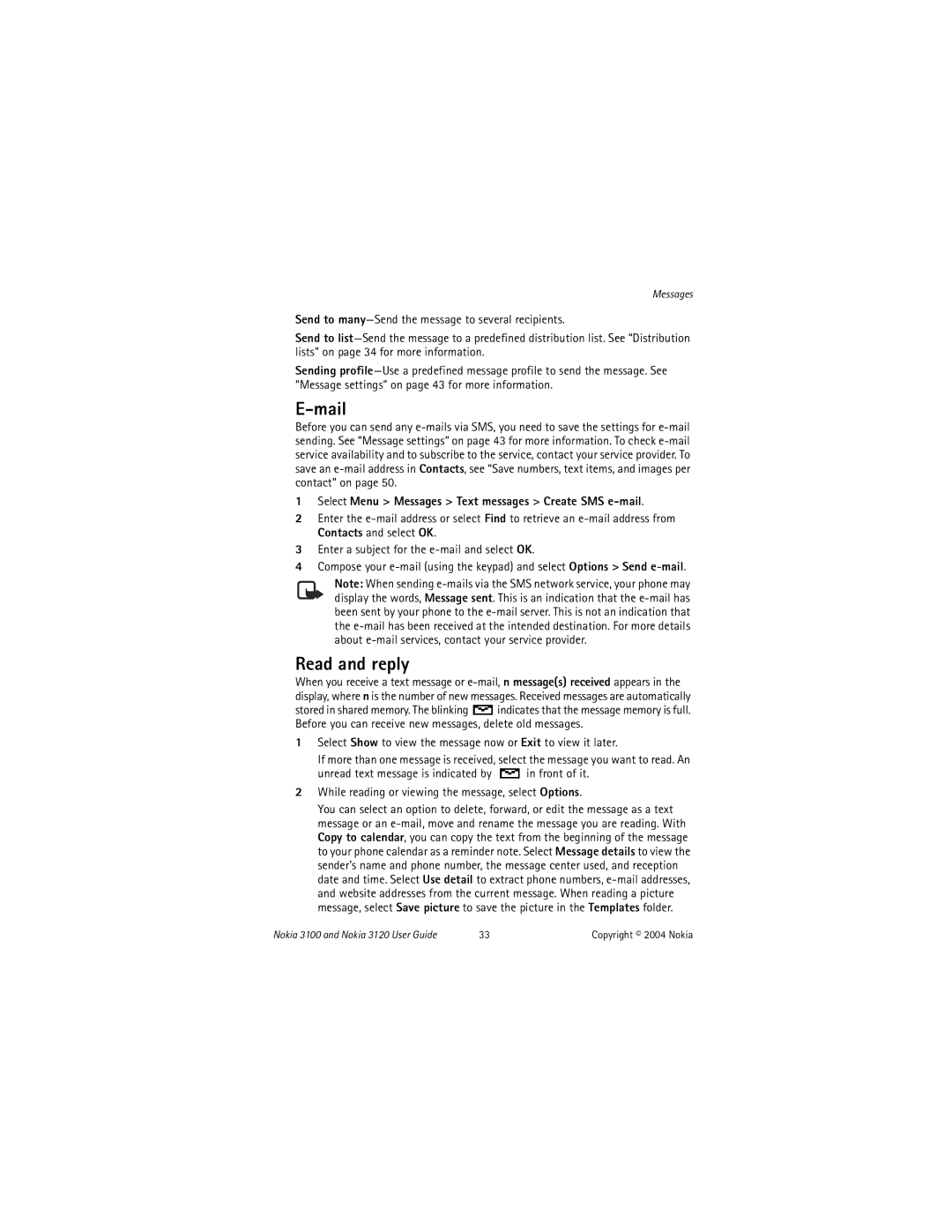N-3120, N-3100 specifications
The Nokia N-3100 and N-3120 are part of Nokia's iconic series of mobile phones that emerged in the early 2000s, a time when mobile technology was rapidly evolving, and design aesthetics were changing dramatically. These devices marked a notable shift in the mobile landscape, bringing together a blend of functionality, style, and affordability.The Nokia N-3100 was known for its compact, lightweight design, featuring a sleek exterior that comfortably fit in the palm of your hand. Weighing just 83 grams, it was easy to carry, making it a popular choice among individuals who valued portability. The device boasted a monochrome screen, which, while basic by today’s standards, provided clarity for its time, displaying crisp text and simple graphics. The phone’s hallmark feature was its customizable ringtones and screensavers, allowing users to personalize their devices to reflect their personalities.
On the other hand, the Nokia N-3120 built on the strengths of its predecessor by introducing a color display, a groundbreaking feature that significantly enhanced the user experience. With a vibrant 65,000 colors on its screen, users could now enjoy a richer visual experience while using applications, games, and accessing multimedia content. The N-3120 also included improved connectivity options, such as support for GPRS, which allowed users to browse the internet and access basic online features at a faster rate than before.
Both models were equipped with the Nokia Series 40 platform, offering a user-friendly interface and access to a variety of applications, including games, productivity tools, and messaging services. In terms of messaging, both phones supported SMS and MMS, allowing users to send text messages and multimedia messages, including photos and sounds, which was relatively advanced for their time.
Battery life was another strong aspect of both models, with the N-3100 and N-3120 capable of delivering several days of usage on a single charge, a key benefit for users who relied on their phones throughout the day.
In conclusion, the Nokia N-3100 and N-3120 represented a significant step forward in mobile technology during their time. With the combination of portability, customizable features, and enhanced display options, they played a vital role in attracting a diverse range of consumers and solidifying Nokia's reputation as a leader in the mobile phone industry. These devices remain a nostalgic reminder of a pivotal era in the evolution of mobile communications.
